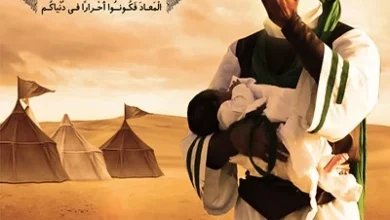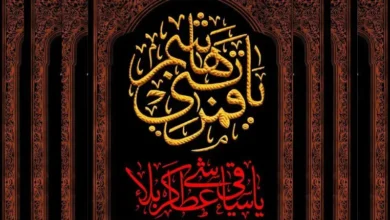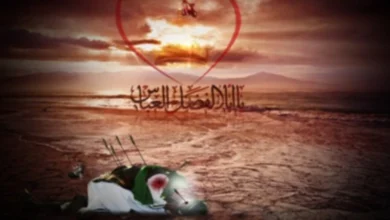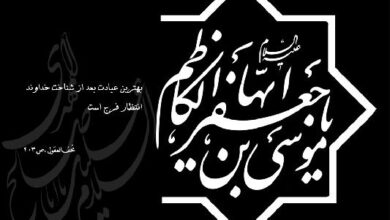Rasool e Khuda Muhammad (PBUH) ‘s Life
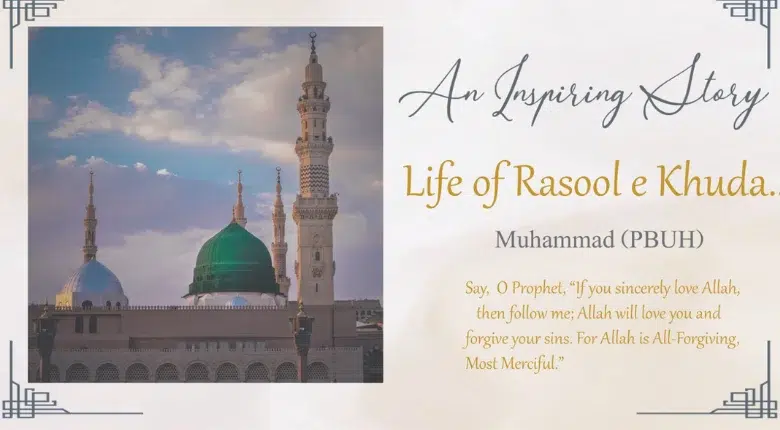
Children Of Rasool e Khuda
Except for Hazrat Fatima (sa), all of the Rasool e Khuda”s children died while He was still alive. All of his relatives come from Fatima’s (sa) line.
Al-Qasim was the first child of Rasool e Khuda. He died at age 2 in Makkah.
Abd Allah was born in Makkah not long after the Prophet’s (pbuh) journey began and died there as well.
Ibrahim: died in Medina, 10/631.
Hazrat Fatima (sa) was martyred in Medina on November 11, 632. (The Prophet’s (pbuh) children live on only because of her.)
Except for Ibrahim, who was from Mariya al-Qabtiyya, the other children were all from Hazrat Khadija bint. Khuwaylid.
Placing al-Hajar al-Aswad By Rasool e Khuda
Before the Prophet’s (pbuh) mission started, al-Hajar al-Aswad (the black stone) was put on the Ka’ba. This confirmed his social standing among the people of Makkah. History says that even the polytheistic Arabs of the Age of Ignorance, before Islam, respected the Ka’ba. After a flood destroyed the walls of the Ka’ba and damaged it, the Quraysh rebuilt the walls.
When they wanted to put the al-Hajar al-Aswad (the black stone) on the Ka’ba, the heads of the Quraysh’s houses fought over who should do it. They all wanted to be the ones to put the stone back on the Ka’ba.
The fight was very hot, and they even brought a tub of blood and put their hands in it as a promise to fight until one of them won. In the end, they decided to listen to the first person who entered al-Masjid al-Haram through the Banu Shayba gate and do what that person said. Hazrat Muhammad (pbuh) was the first person to come in.
The leaders of the Quraysh said that Rasool e Khuda Muhammad (pbuh) could be trusted and that they would accept his decision. They then told him what had happened. Rasool e Khuda Muhammad (pbuh) said, “Let’s spread a piece of cloth,” and they did. He then put the black stone on top of the cloth. Then he said, “The head of each family should come and hold a corner of this cloth.”
They lifted up the cloth and carried the stone to where it was supposed to go. Then he lifted the stone and put it back on the Ka’ba. By making this decision, He stopped a war that was about to start.
Baesat:
Hira is a cave in Makkah where it is said that the Rasool e Khuda Muhammad (pbuh) got his first revelations.
Twelver Shi’as say that the Prophet’s (pbuh) mission started on Rajab 27, or June 25, 610. In the years before his mission, Muhammad (pbuh) spent a lot of time alone worshipping God. He would spend a month alone in a cave in the mountains called Hira, where He would pray to God, After a month, He went back to Makkah and walked around the Ka’ba seven or more times before going home.
He was in the cave of Hira’ when the mission started, and verses of the Qur’an were shown to Him. In the end, Muhammad (pbuh) told what happened:
“Gabriel came to me and said, ‘Read!’ I told him, ‘I can’t read.’ He told me again, ‘Read!’ I asked, ‘What do I read?’ He told me, ‘Read in the name of your Lord, who made you.'”
Most people think that the Prophet (pbuh) was forty years old when He started His mission. With this revelation that started his mission, the Prophet (pbuh) went back to Makkah and read these lines from Qur’an 96.
When he had that feeling, which was new to him that night, he went back home right away. That night, his house was full of three people: His wife Khadija, his cousin Ali bin. Abi Talib, and the son He raised as his own, Zayd bin. Harisa. The Holy Prophet (pbuh) first taught Islam to his own family. His wife and Ali bin. Abi Talib was the first people to believe that He was a prophet.
Hazrat Abi Talib (as) came from a group of men. Imam Ali (as)was under the care of the Prophets at the time. Other names named as the first Muslims in other sources are Abu Bakr and Zayd bin. Harisa. Even though the invitations were small at first, the number of Muslims started to grow, and soon they were leaving Mecca to pray with the Prophet (pbuh).
Invite the public
After His mission, Rasool e Khuda Muhammad (pbuh) quietly asked people to join Islam for three years. But because the verses of the Qur’an came out in a certain order, some people think that the Prophet’s (pbuh) public call happened very soon after the first verse.
At first, the Prophet (pbuh) told people to stop worshipping many gods (idols) and start worshipping only one God (i.e., monotheism). At first, prayers were made up of two parts. Later, those who were traveling had to pray in two units, while those who were not traveling had to pray in four units. When it was time to pray, Muslims would hide in the cracks of rocks and other places far away from other people.
The number of Muslims in Makkah started to grow over time. It is well known that God told the Prophet (pbuh) three years into his mission to invite people to Islam in public. Ibn Ishaq says that the Prophet (pbuh) told Ali (as), “O Ali, God told me to call my closest family members to praise Him. So kill a sheep and give us some bread and a bowl of milk.”
Ali (as) did this, and about forty people from ‘Abd al-Mutalib’s family got together and ate the food, which wasn’t enough for the number of people there. But, it was a miracle that they all ate until they were full. Abu Lahab said, ”
He has charmed you all (for food!)” when the Rasool e Khuda (pbuh) was about to start his speech. Because of this, everyone got confused and left. On another occasion, the Prophet (pbuh) called them and told them:
“O Children of ‘Abd al-Mutalib! I don’t think any Arab has ever given his people something better than what I have given you. I have given you this world and the next”.
As al-Tabari writes, after the Rasool e Khuda (pbuh) invited his family to join Islam, he said, “I am the best of people.”
“Which one of you would help me in this [task] to be my brother, my vicegerent, and khalifa (caliph) among you?” he asked. When Ali (as) was the only one to speak up, everyone else fell quiet. He told the Prophet, “I will be that guy.” The Rasool e Khuda (pbuh) then said, ”
This is my deputy and my khalifa among you. Pay attention to what he says and do what he says.”
This story has been told by other authors and biographers of the Rasool e Khuda (pbuh) and is one of the best-known hadees.

